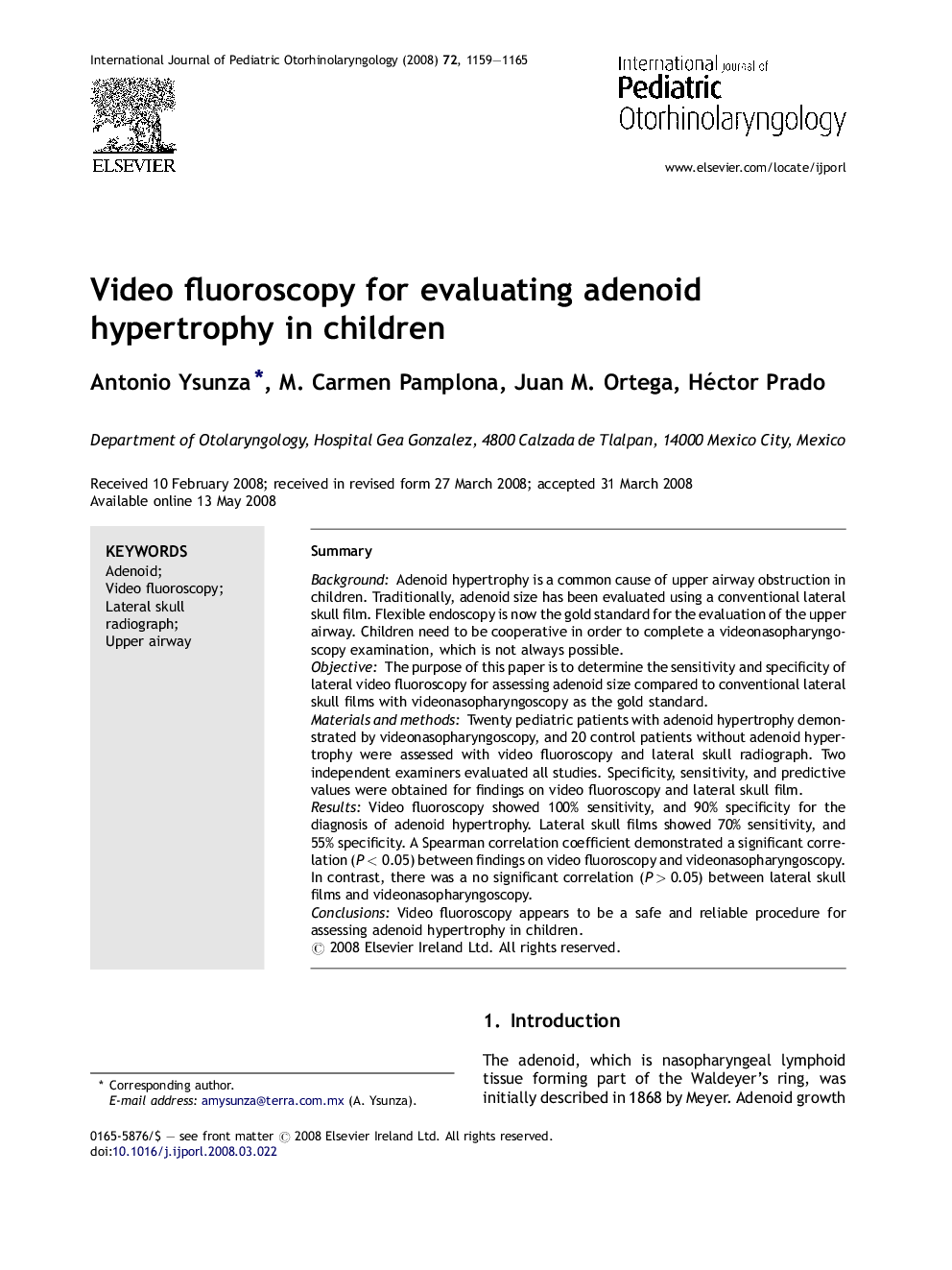| Article ID | Journal | Published Year | Pages | File Type |
|---|---|---|---|---|
| 4115516 | International Journal of Pediatric Otorhinolaryngology | 2008 | 7 Pages |
SummaryBackgroundAdenoid hypertrophy is a common cause of upper airway obstruction in children. Traditionally, adenoid size has been evaluated using a conventional lateral skull film. Flexible endoscopy is now the gold standard for the evaluation of the upper airway. Children need to be cooperative in order to complete a videonasopharyngoscopy examination, which is not always possible.ObjectiveThe purpose of this paper is to determine the sensitivity and specificity of lateral video fluoroscopy for assessing adenoid size compared to conventional lateral skull films with videonasopharyngoscopy as the gold standard.Materials and methodsTwenty pediatric patients with adenoid hypertrophy demonstrated by videonasopharyngoscopy, and 20 control patients without adenoid hypertrophy were assessed with video fluoroscopy and lateral skull radiograph. Two independent examiners evaluated all studies. Specificity, sensitivity, and predictive values were obtained for findings on video fluoroscopy and lateral skull film.ResultsVideo fluoroscopy showed 100% sensitivity, and 90% specificity for the diagnosis of adenoid hypertrophy. Lateral skull films showed 70% sensitivity, and 55% specificity. A Spearman correlation coefficient demonstrated a significant correlation (P < 0.05) between findings on video fluoroscopy and videonasopharyngoscopy. In contrast, there was a no significant correlation (P > 0.05) between lateral skull films and videonasopharyngoscopy.ConclusionsVideo fluoroscopy appears to be a safe and reliable procedure for assessing adenoid hypertrophy in children.
